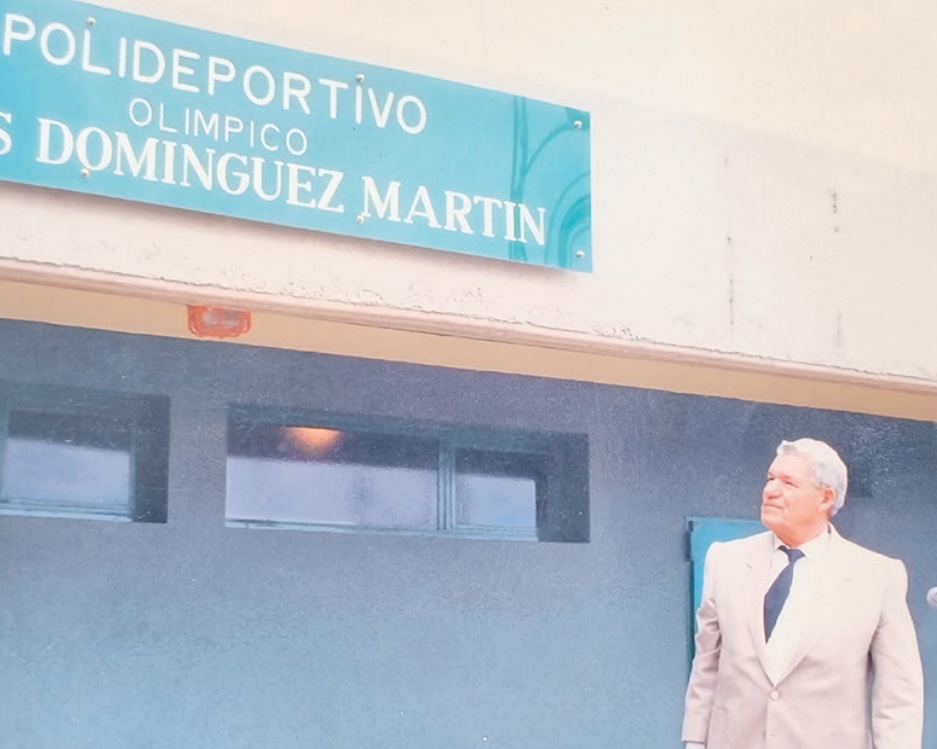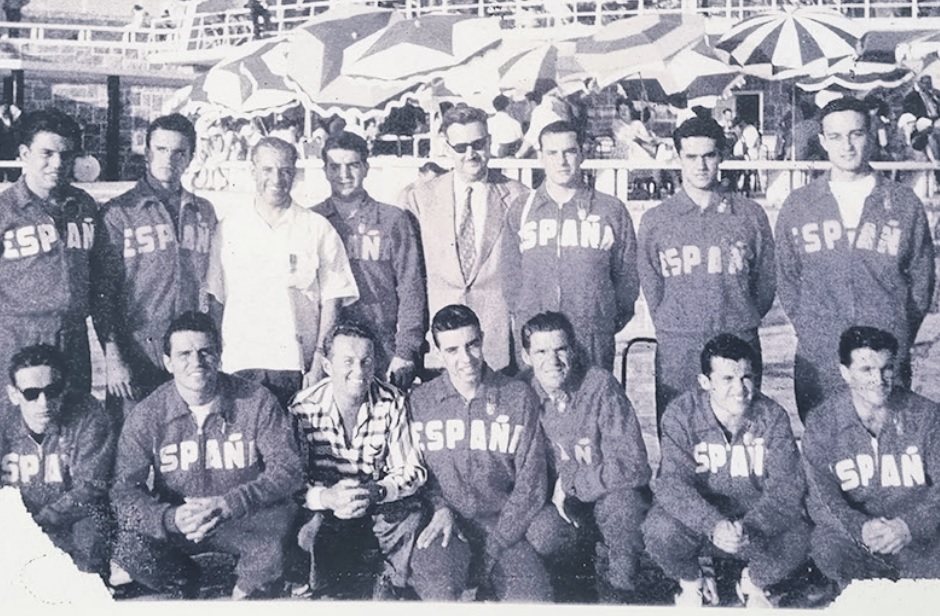Time passes peacefully on Jesús Domínguez Street in Los Cristianos, a few steps from Las Vistas beach and near the place where one of the daughters of the so-called Grillo lives. They say because, as a child, he would scrape her aunt’s door with whatever utensil she had on hand. From that noise, like that of a cricket, came his nickname.
“For others he was a splendid person,” explains one of the eight children he had, María Jesús Domínguez Melo. “There were eight, yes. Four born in Las Palmas and four here,” she points out, while she assures that she would like to “have some memory” of his father, who was an international swimming legend for the number of records he achieved and distinctions he accumulated. .
He has no medal or trophy left to vindicate his roots. Just a book of compilation of images and newspaper clippings that show the relevance of this athlete from the south of Tenerife. Although these were different times, Grillo did achieve some recognition during his lifetime, both in his municipality and throughout the Canary Islands, especially in Las Palmas de Gran Canaria.
“Jesús Domínguez Martín was born in January 1927, although in other sources the year 1926 is noted, in Los Cristianos. In the Municipal Register of Arona, on December 31, 1931, Jesús Domínguez Martín is registered in Los Cristianos, he is 6 years old, son of José Domínguez León, 35 years old and a day laborer by profession; and Aurelia Martín Rancel, 30 years old and a day laborer by profession,” according to data from researcher, writer and popularizer Marcos Brito.
This year marks twenty-five since his death and seventy-five since his participation in the 1948 London Olympic Games, the first to be held after the end of World War II. He was one of the first canaries, if not the first, to be in ones. Two others accompanied him to London: Francisco Calamita and Manuel Guerra, the latter from Gran Canaria. The English city was still badly damaged as a result of the bombing by German aircraft, according to what he himself said from what he was able to observe from the plane.
In fact, he claimed that, although it had ended when the Olympics were held, “the war was there. London totally destroyed, hunger loomed around every corner; The Russians did not participate, the Germans did not have athletes…” He also recounted his meeting with two Spanish exiles in London, who asked him how life was in Spain: “We said, ma, hungry,” he explained to them.
In that competition, the national delegation was made up of 64 men, all of whom participated in nine sports. The only medal was a silver obtained in the equestrian team jumping. Jesús Domínguez was one of the six swimmers on a Spanish team weighed down by the post-war period. “In London we are hungry. Each country provided its food; Spain sent theirs sixteen days later. Thanks to the Argentines we did not die,” he said in an interview with Diario de Las Palmas. He also recalled the heat that the Canarian swimmers felt in the heated pools of the British capital during the games.
He said that they later did not let him go to the Helsinki Olympics in 1952 due to “favoritism,” since the Spanish Federation decided to register other athletes. They told him when he had already arrived in Finland, where they left him with just five pounds to live on, with which he fed himself with “a few loaves of bread and kilos of pears,” as he explained in the now defunct La Gaceta de Canarias.
It cannot be said that Jesús Domínguez was not a prophet in his land, since, in addition to a street, he named the sports hall and the Arona municipal swimming pool itself, located in Los Cristianos. In Las Palmas de Gran Canaria, where he lived for many years, and where he shared swimming with his work as a taxi driver, there is the so-called Olympic sports center that pays tribute to him.
Marcos Brito remembers that on November 15, 1959, a soccer match was held in Los Cristianos as a tribute and benefit. “The Arona City Council – he underlines – had already organized another tribute two years before to collaborate in the acquisition of a public service vehicle” taking into account the economic situation Jesús Domínguez and “being a resident of this town who has dedicated his youth to enhancement of National Sports”, for which it is “unanimously agreed to contribute two thousand pesetas to increase the funds for the acquisition of the reference vehicle, authorizing the Mayor’s Office to organize a commission to give the greatest enhancement to the tribute that is plans to surrender to him”, according to the municipal file.
Marcos Brito explains that in his youth he worked in his family’s lime kilns, in the area of La Carnada beach, in Los Cristianos, where he began to swim “and win in the swimming tests held at the town’s festivities, at the beginning of the 1940s. It was after his entry into military service, in 1946, that he had his first contact with swimming pools, participating the following year in some National Championships, held in Las Palmas.
Until his retirement from the competition in 1958, “and according to a summary provided by Jesús Domínguez, it should be noted that he was the Spanish individual champion 29 times and 48 times in team events. He is remembered above all – adds Marcos Brito – for being the Spanish swimmer with the highest number of titles and national records, in addition to obtaining the Gold Medal for sporting merit from the National Delegation of Physical Education and Sports.


















